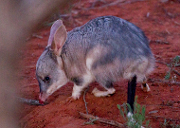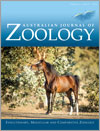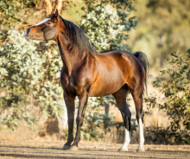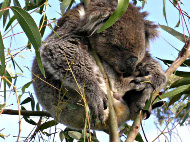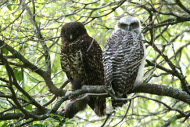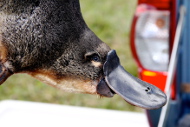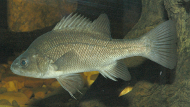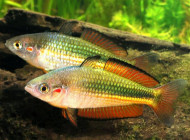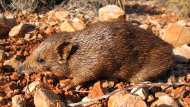Australian Journal of Zoology
Volume 61
Number 5 2013
We determined the decay of faecal cortisol metabolite (FCM) in greater bilby (Macrotis lagotis) faeces during exposure to natural weathering. Our results recommend that freshly excreted bilby faeces (where the sample maintains a distinct odour for 9–13 days) should be used to study FCM levels in wild bilbies.
Photo by Nicolas Rakotopare.
The purposes of this study were to analyse the genetic variability in Waler horses and to investigate genetic relationships with other horse breeds. We found that there is no immediate concern for loss of variation in Waler horses and there clearly has been a strong input from the Thoroughbred into the Waler horse breed.
Photo by Christiane Slawik © http://www.slawik.com/
This study measured oxalate content in the eucalypt leaf diet of koalas in the Mount Lofty Ranges population, South Australia. Results showed that eucalypt leaf oxalate content is low overall. Dietary oxalate is therefore unlikely to be the primary cause of oxalate nephrosis in Mount Lofty koalas and further research is underway to determine the pathogenesis.
Photo by Natasha Speight.
The diet of the powerful owl (Ninox strenua) is comprised almost exclusively of arboreal mammals and birds, with the frequency contribution of each prey species varying geographically. The diet is dominated by hollow-dependent fauna, especially the greater glider (Petauroides volans) and sugar glider (Petaurus breviceps), which raises conservation concern regarding forest management activities.
Photo by Rohan J. Bilney.
Using a Bayesian approach, we have identified three evolutionarily significant units (ESUs) in the platypus (Ornithorhynchus anatinus). These ESUs correspond to geographically isolated regions in the platypus’ broad distribution. We have also detailed several smaller management units (MUs) existing within our study area based on subregional clusters and geographically significant features.
Photo by Jennifer Davis.
Movements of the nationally threatened Macquarie perch (Macquaria australasica) were investigated in the Yarra River, Victoria, using radio telemetry. Macquarie perch exhibited complex, non-synchronous movements. Tagged fish occupied restricted home ranges and undertook occasional local upstream and downstream moves coinciding with flow variations.
Photo by Tarmo A. Raadik.
Rainbowfish eggs have sticky, web-like strands that attach to weeds, but might also attach to birds or human equipment and cause them to be transported to alternative water bodies. Most rainbowfish eggs die within 15 min when exposed to air; however, when attached to a damp substrate many still hatch even after an hour.
Photo by Gunther Schmida.
A set of 15 microsatellite loci was optimised for multilocus genotyping of non-invasively collected samples of Macropus antilopinus (antilopine wallaroo). These informative markers are specifically designed for non-invasive samples and will be used to assess population structure and conservation genetics of this species in the future.
Bandicoots and bilbies (Peramelemorphia) represent a distinct and curious lineage within the marsupial adaptive radiation. Here, anatomical descriptions of Isoodon obesulus and Macrotis lagotis together with comparative functional interpretations indicate that the forelimb of I. obesulus is very well equipped in order to generate and withstand large forces for digging.
Photo by W. Bancroft.
